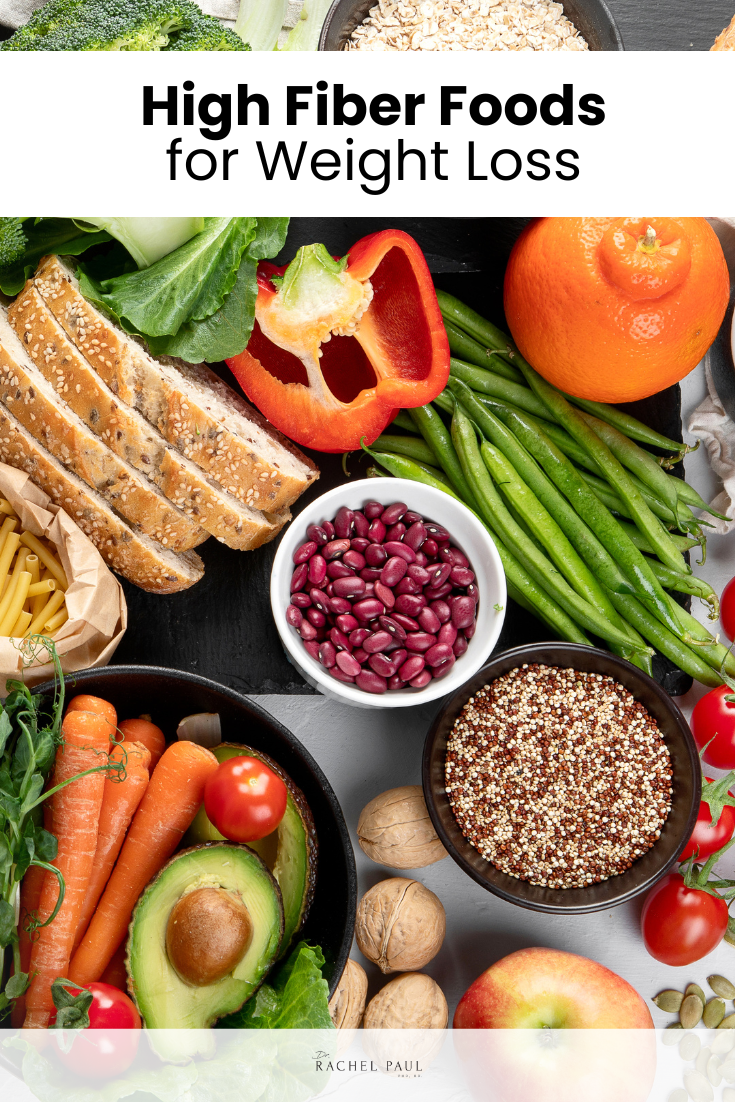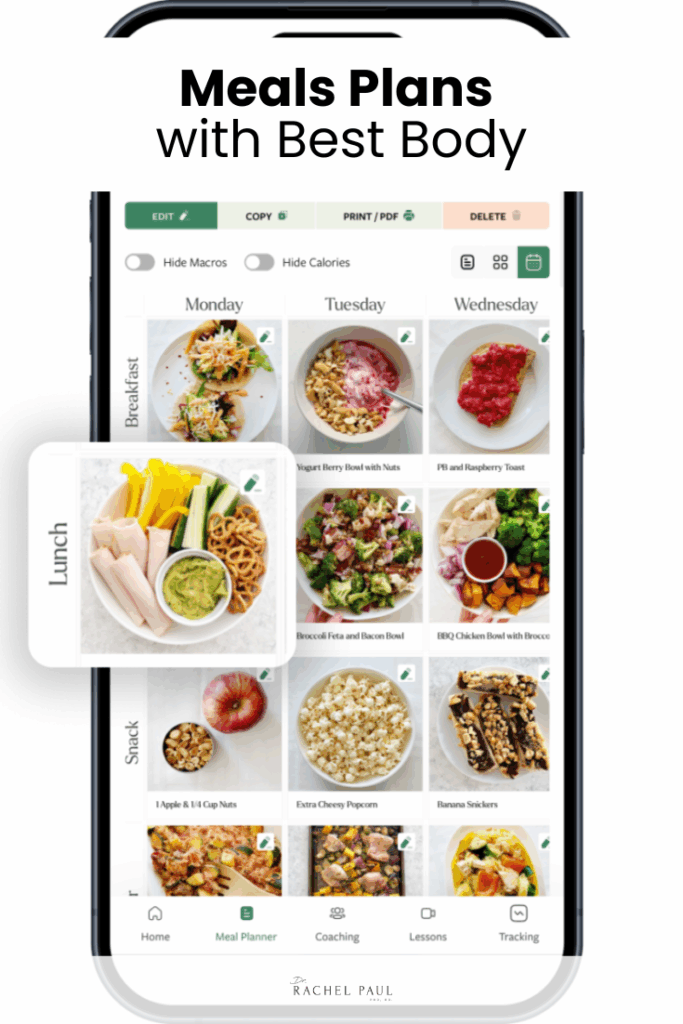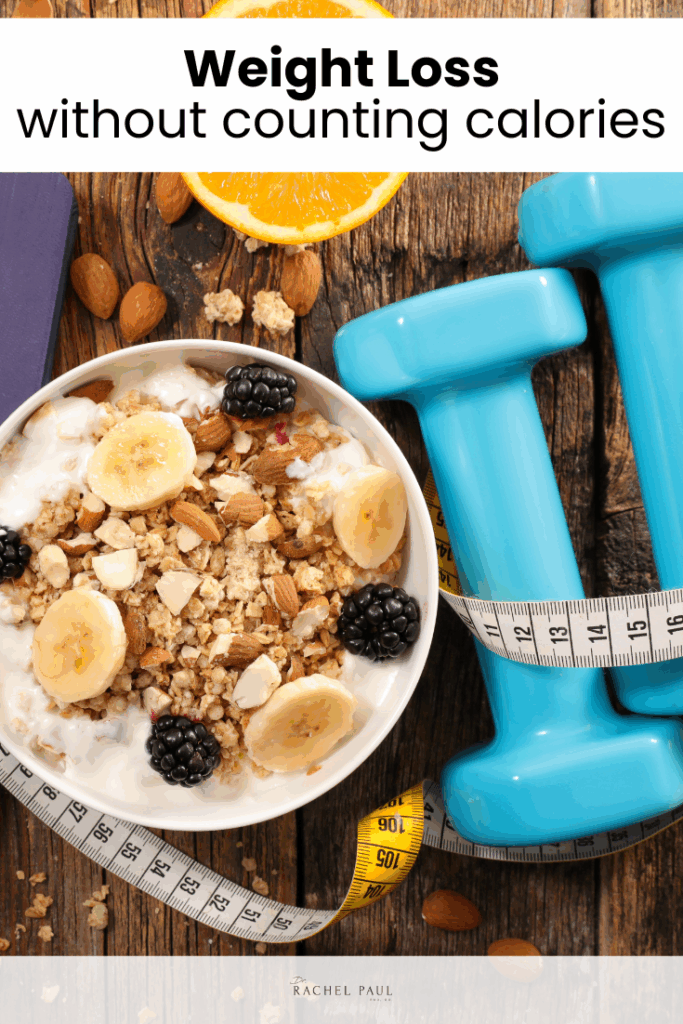Looking for an easy way to feel fuller, improve digestion, and support healthy weight loss without counting every calorie? Start with fiber.
Eating more high-fiber foods is one of the most effective (and underrated) habits for improving your overall health. Fiber plays a powerful role in regulating digestion, stabilizing blood sugar, reducing cravings, and even lowering your risk of heart disease. And unlike restrictive diets, boosting your fiber intake helps you feel satisfied.
Whether your goal is weight loss, better gut health, or more energy throughout the day, getting enough fiber can make a major difference. But not all high-fiber foods are created equal and it’s not always easy to know how much fiber you’re actually getting.
In this post, you’ll get a quick cheat sheet of the best fiber-rich foods, including how many grams of fiber and calories are in each. Use this as a simple guide for building balanced meals.
Best High Fiber Foods Cheat Sheet
These are the best fiber-packed options across veggies, fruits, grains, nuts, and seeds. Aim to include at least one or two of these at each meal for better fullness and overall nutrition.
Starchy Vegetables and Grains
These provide both energy and fiber, great for meals that keep you full:
Starchy Veggies
- 1 sweet potato (5” long) – 4g fiber, 110 calories
- 1/2 cup beans or lentils – 8g fiber, 110 calories
- 1 cup peas – 7g fiber, 120 calories
- 4 cups air-popped popcorn – 5g fiber, 120 calories
- 1 cup corn – 3g fiber, 125 calories
- 1 white potato (2”x3”) – 4g fiber, 160 calories
Grains
- 1 cup cooked bulgur – 8g fiber, 150 calories
- 1 slice sourdough bread – 3g fiber, 100 calories
- 2 thin slices sprouted bread – 6g fiber, 120 calories
- 1 cup cooked steel cut oats – 8g fiber, 150 calories
- 1/2 cup cooked farro – 3g fiber, 140 calories
Non-Starchy Vegetables
These are low-calorie, high-volume veggies perfect for adding bulk to your meals:
- 3 cups spinach – 2g fiber, 20 calories
- 2 cups broccoli – 3g fiber, 40 calories
- 1 cup asparagus – 3g fiber, 30 calories
- 1 cup cabbage – 2g fiber, 20 calories
- 1 cup celery – 2g fiber, 15 calories
- 1/2 cup Brussels sprouts – 2g fiber, 30 calories
- 1/2 cup canned artichoke hearts – 2g fiber, 20 calories
- 1 cup cauliflower florets – 3g fiber, 20 calories
- 1 medium zucchini – 2g fiber, 30 calories
Fruits, Nuts, and Seeds
Add these to meals or snacks to support digestion and blood sugar stability:
Fruits
- 1 cup mixed berries – 5g fiber, 80 calories
- 1 pear – 6g fiber, 100 calories
- 2 kiwi – 5g fiber, 90 calories
- 1 orange – 3g fiber, 60 calories
Nuts & Seeds
- 1/4 cup almonds – 4g fiber, 200 calories
- 2 tbsp flax seeds, ground – 4g fiber, 80 calories
- 2 tbsp chia seeds – 7g fiber, 90 calories
- 2 tbsp sesame seeds – 2g fiber, 100 calories
- 1/4 cup pistachios (no shell) – 3g fiber, 160 calories
High fiber foods help with weight loss, balance, and feeling full without extra calories. Use this list to add more fiber-rich options to your meals, snacks, and grocery list. These foods are simple, realistic, and ideal for busy people who want results.


